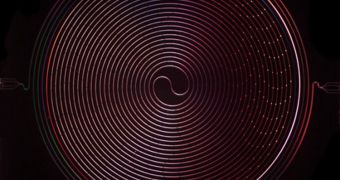A new type of amplifier developed by experts in the United States could soon be used to unlock the mysteries of the Universe and the quantum world. The instrument could also lead to the development of advanced electronics, its creators say.
Scientists at the NASA Jet Propulsion Laboratory (JPL) and the California Institute of Technology (Caltech), both in Pasadena, announce the development of a new type of amplifier for electrical signals.
They say that the instrument could be used to study everything from stars, galaxies, clusters, and black holes to the smallest intricacies of the quantum world. Basically, the instrument will enable experts to conduct accurate measurements of various phenomena using only very weak original signals.
Additionally, the amplifiers could also be used to finally move the field of quantum computing forward. Physicists have been trying to create these machines for a long time, but thus far little substantial progress was made.
The research group says that the new transistor technology eliminates a problem inherent to existing devices – the tendency to add noise when amplifying very weak signals, such as radio waves coming from extremely distant galaxies.
However, their main advantage is that they can function over a wide range of frequencies. Quieter devices, such as parametric amplifiers, produce almost no noise at all, but are limited in the range of wavelengths they can amplify.
What the Caltech/JPL team did was develop a device that combines the best of both worlds. While still operating in a narrower range of frequencies than a standard, dynamic range amplifier, the instrument is capable to achieve the noise suppression level of a parametric amplifier.
At the same time, the range of frequencies it can boost is around 10 times wider than that of a parametric amplifier. This instrument “will redefine what it is possible to measure,” explains expert Jonas Zmuidzinas.
He holds an appointment as the Caltech Merle Kingsley professor of physics, and also as the chief technologist at JPL. Zmuidzinas was a member of the research team behind the new study.
The new amplifier consists of a superconducting material called niobium titanium nitride, which is coiled in a double-spiral pattern, and is around 15 millimeters wide. Additional details of the device appear in a recent issue of the esteemed scientific journal Nature Physics.

 14 DAY TRIAL //
14 DAY TRIAL //